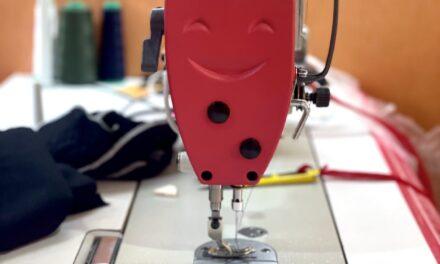The fashion industry has long been known for its fast-paced, ever-changing trends and the constant pressure to keep up with the latest styles. However, this trend-driven approach comes at a high cost to both people and the planet. The necessity of sustainable fashion practices is more needed now more than ever.
The fashion industry is one of the most polluting industries in the world, responsible for massive amounts of waste, carbon emissions, and exploitation of workers. In recent years, there has been an increasing movement towards sustainable fashion as a way to combat these issues.
Definition of Sustainable Fashion
Sustainable fashion refers to clothing that is designed and produced in a way that minimizes its impact on the environment and on society. This includes using eco-friendly materials such as organic cotton or recycled polyester, reducing waste through efficient production methods or upcycling materials into new garments, ensuring fair labor practices throughout the supply chain, and considering the overall lifecycle impact of a garment from production to disposal.
Brief History of Sustainable Fashion
While sustainable fashion is often associated with more recent trends towards ethical consumerism and environmentalism, it actually has roots dating back decades. In the 1960s and 1970s, there was a focus on natural fabrics such as cotton and wool as part of broader movements towards environmentalism.
In addition to this interest in natural fibers, there were also early efforts towards ethical production such as fair trade initiatives. More recently, sustainable fashion has gained momentum due to increased awareness about environmental issues such as climate change and plastic pollution.
Consumers are also becoming more conscious about where their products come from and how they are made. As people become more aware about these issues they drive change by demanding eco-friendly products that are responsibly made.
1. The Rise of Sustainable Fashion
Increased Awareness About Environmental and Social Issues
In recent years, there has been a significant increase in awareness about the environmental and social issues associated with the fashion industry. Consumers have become more conscious of the destructive impact that fast fashion has on the planet, from pollution and waste to greenhouse gas emissions.
They have also become more aware of the exploitative labor practices that are often used by clothing manufacturers, particularly in developing countries where garment workers are paid very low wages and work under unsafe conditions. As a result of this increased awareness, consumers are demanding more transparency from clothing brands about their supply chains and production processes.
They want to know that the clothes they buy are made in an environmentally responsible way and are not produced using sweatshop labor. This demand for transparency is driving many companies to adopt more sustainable practices or risk losing customers.
Consumer Demand for Eco-Friendly and Ethically-Made Products
Consumers are increasingly seeking out eco-friendly and ethically-made products when they shop for clothes. This trend is driven by a desire to make more socially responsible choices as well as concern for the environment. Many shoppers are willing to pay a premium for sustainable fashion products that they can feel good about buying.
This shift in consumer preferences has led many clothing brands to incorporate eco-friendly materials into their designs, such as organic cotton or recycled polyester. Ethical manufacturing practices, such as fair trade or living wage initiatives, have also become increasingly popular among consumers.
Growing Number of Sustainable Fashion Brands
Over the past few years, there has been a significant increase in the number of sustainable fashion brands entering the market. These companies prioritize sustainability throughout their entire supply chain, from sourcing materials to manufacturing processes to packaging and shipping. Sustainable fashion brands often use innovative materials like Tencel® lyocell made from sustainably harvested trees or recycled plastic bottles turned into eco-friendly fibers.
They also prioritize fair labor practices, ensuring that workers are paid fairly and work under safe conditions. Many of these brands have become popular among consumers who are looking for socially responsible fashion options.
As sustainable fashion continues to gain momentum, it is likely that we will see even more companies enter the market with sustainable clothing lines. These brands will need to continue to prioritize transparency and sustainability if they want to attract and maintain a loyal customer base.
2. The Impact of Fast Fashion
Negative impact on the environment
Fast fashion has had a significant negative impact on the environment. The production of fast fashion garments requires vast amounts of natural resources, including water, land, and energy. It has resulted in increased levels of pollution and waste.
Every year, the textile industry contributes to 20% of global wastewater and 10% of global carbon emissions. To keep up with consumer demand for cheap clothing, fast fashion brands are constantly introducing new collections leading to an increase in textile waste.
Moreover, many fabrics used in fast fashion are synthetic and non-biodegradable such as polyester that takes hundreds of years to decompose resulting in long term harm to the environment. The use of toxic chemicals during garment production can also lead to soil contamination and water pollution.
Exploitation of workers in developing countries
The fast-fashion business model is dependent on cheap labor which often leads to exploitation of workers in developing countries where labor laws are lenient or nonexistent. Workers work long hours for low wages in hazardous working conditions which can lead to health issues like respiratory problems from inhaling toxins.
Furthermore, there have been instances where workers have been subjected to physical abuse and sexual harassment. Many fast-fashion brands prefer sourcing from factories that offer lower prices even if it means compromising on worker safety standards leading them towards employing child labor or forced labor practices.
Unsustainable production and consumption patterns
Fast fashion is characterized by unsustainable production and consumption patterns where consumers purchase clothing items that they wear only a few times before discarding or replacing them with new ones. This leads to excessive consumption patterns that cannot be sustained by our planet’s finite resources.
To satisfy consumer demand many garments produced by fast fashion brands are designed with planned obsolescence meaning they wear out quickly forcing consumers into buying replacements more frequently than necessary. This is a wasteful practice that has created a throwaway culture where garments are seen as disposable leading to the production of more waste and environmental damage.
Fast fashion has had detrimental effects on the environment, workers’ rights, and consumption patterns. The negative impacts of fast fashion cannot be ignored, and it is essential for consumers to make more responsible choices when purchasing clothing items.
3. Benefits And The Necessity of Sustainable Fashion
Reduced Carbon Footprint
The production and distribution of fast fashion items have a significant environmental impact. This is because fast fashion items are made with cheap, synthetic materials, which are produced using a lot of energy and resources. Additionally, the transportation of goods across long distances creates a large carbon footprint.
On the other hand, sustainable fashion items are made from eco-friendly materials that require less energy and resources to produce. For example, materials like organic cotton and hemp can be grown without the use of harmful pesticides and fertilizers.
Additionally, locally-sourced materials reduce transportation emissions. Sustainable fashion brands also use more environmentally-friendly practices in the production process such as water conservation techniques or using natural dyes to minimize harm on the environment.
Improved Working Conditions for Garment Workers
Many garment workers in developing countries work long hours under poor working conditions and often earn low wages. Fast fashion companies typically prioritize profits over workers’ welfare and natural resources.
In contrast, sustainable fashion brands prioritize ethical labor practices by ensuring that their suppliers comply with fair labor standards such as safe working conditions and fair wages. Moreover, some sustainable fashion brands even provide training programs for their workers to develop their skills so they can start their own businesses or advance in their current roles.
Support for Local Economies and Communities
Sustainable fashion can also have significant positive effects on local economies. Buying locally sourced products supports small communities’ economies rather than outsourcing production to other countries where labour is cheaper.
Additionally, many sustainable brands partner with organizations that support local communities by providing skill-building opportunities or investing in community development programs. Sustainable brands also strive to minimize waste by incorporating circular economy principles into their business models.
Rather than disposing of unsold inventory or damaged garments into landfills they donate it or repurpose it into new clothing or accessories for sale. Overall, sustainable fashion provides a positive impact on both the environment and people around the world by reducing carbon emissions, promoting fair labor practices, and supporting local economies.
4. Challenges in Implementing Sustainable Practices in the Fashion Industry
Lack of Transparency in Supply Chains
One major challenge for sustainable fashion is the lack of transparency in supply chains. Many companies do not disclose where their materials come from or how they were produced, which can make it difficult for consumers to make informed decisions about their purchases.
This lack of transparency also makes it challenging for sustainable brands to trace their supply chains and ensure that they are sourcing materials ethically and sustainably. To address this issue, some sustainable fashion brands are using technology to increase supply chain transparency.
For example, some companies are using blockchain technology to track the journey of each garment from production to sale. This allows consumers to see exactly where their clothing comes from and how it was made.
Higher Production Costs for Sustainable Materials and Practices
Another challenge facing sustainable fashion is higher production costs for sustainable materials and practices. While fast fashion brands can produce clothing quickly and cheaply by using low-quality materials and unethical labor practices, sustainable brands typically use higher-quality, eco-friendly materials and pay fair wages to workers. These higher production costs can make it difficult for sustainable brands to compete with fast fashion brands on price.
However, some companies are finding creative ways to reduce costs while still maintaining their commitment to sustainability. For example, some brands are using recycled materials or upcycling existing garments as a way to reduce waste and keep costs down.
Resistance to Change from Traditional Fashion Companies
Traditional fashion companies often resist change towards more sustainable practices due to concerns about profitability. These companies may view sustainability as a threat rather than an opportunity, fearing that increased production costs will negatively impact their bottom line. However, there is evidence that sustainability can actually be good for business.
Consumers are becoming more conscious about the impact of their purchases on the environment and society, meaning that brands that prioritize sustainability may have a competitive advantage in the marketplace. Additionally, sustainable practices can lead to increased efficiency and reduced waste, ultimately reducing costs in the long run.
Overall, while there are certainly challenges facing the sustainable fashion industry, there are also many opportunities for innovation and positive change. As consumers become more aware of the impact of their purchasing decisions and demand more sustainable options, it is likely that we will continue to see growth in the sustainable fashion sector.
5. Sustainable Fashion as a Necessity, Not Just a Trend
Sustainable Fashion is not Just an Emerging Trend
Sustainable fashion is here to stay. It’s not just a passing fad but rather a necessary shift towards a more responsible and ethical industry. The recent surge in demand for eco-friendly and ethically-made products is evidence of this growing trend.
Consumers are more informed and aware than ever before of the negative impacts of fast fashion on workers, the environment, and communities. They are increasingly seeking out sustainable alternatives, which has led to the emergence of numerous sustainable fashion brands.
The industry itself is also recognizing the importance of sustainability. Many traditional fashion companies are now implementing sustainable practices into their operations to keep up with changing consumer expectations.
The Benefits of Sustainable Practices Far Outweigh the Challenges Faced by the Industry
While it’s true that there are challenges in implementing sustainable practices in the fashion industry, such as higher production costs for sustainable materials and resistance to change from traditional companies, the benefits far outweigh these challenges. Not only does sustainable fashion reduce our carbon footprint and improve working conditions for garment workers, but it also supports local economies and communities by promoting fair trade practices and responsible sourcing.
Furthermore, investing in sustainability can actually save companies money in the long run by reducing waste and improving efficiency. As consumer demand for sustainability continues to grow, businesses that fail to adapt may fall behind their competitors.
Conclusion
The necessity of sustainable fashion can not be over looked anymore and despite some obstacles facing the industry as it shifts towards sustainability, there is reason for optimism. The increasing number of sustainable brands emerging on the market shows that consumers are willing to pay more for products that align with their values.
Additionally, advancements in technology have made it easier than ever before for companies to track their supply chains and ensure ethical production. With continued innovation and dedication from both consumers and industry leaders, a sustainable future for fashion is not only possible but also necessary.










